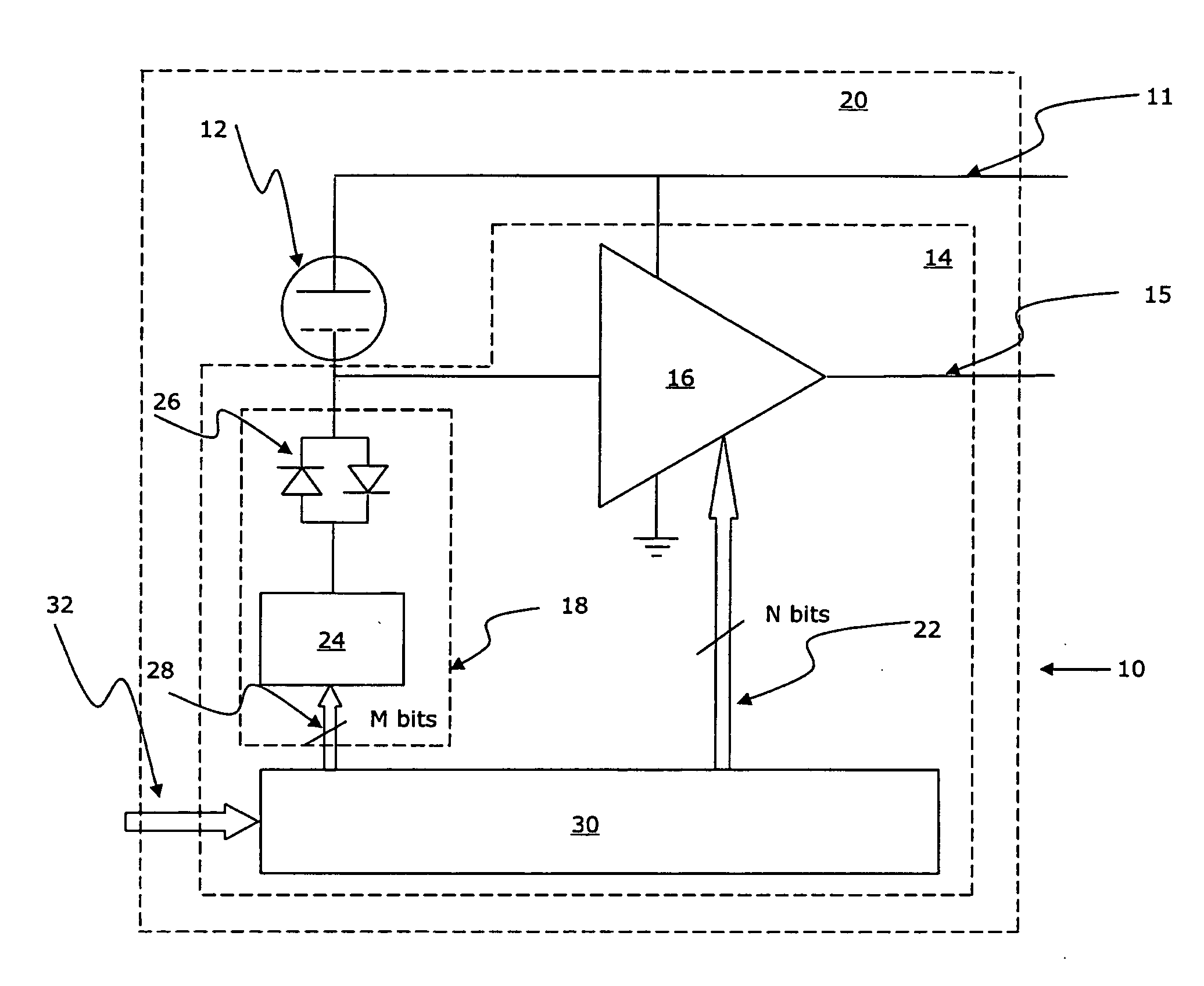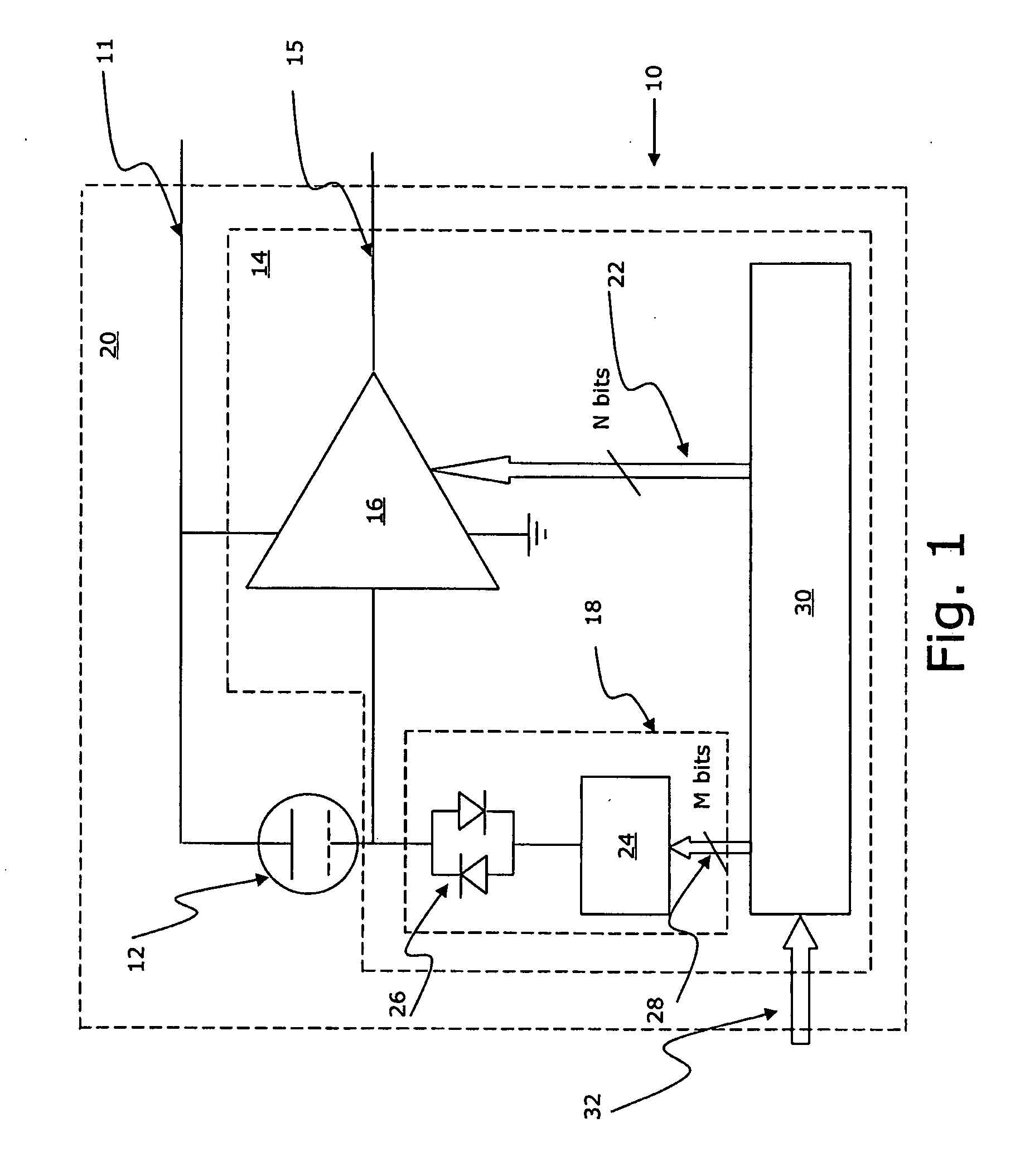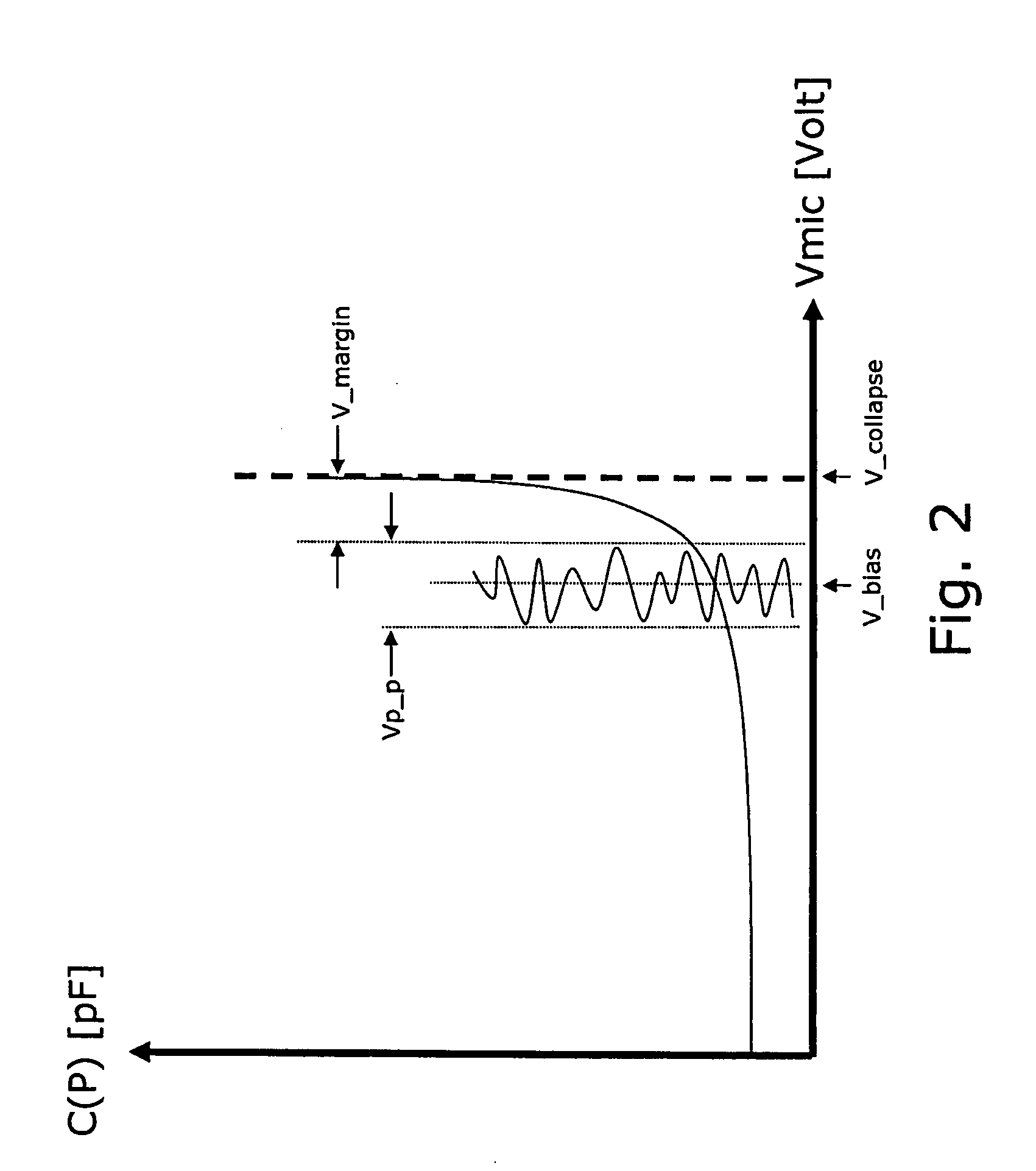Calibrated microelectromechanical microphone
a micro-electromechanical and microphone technology, applied in the direction of transducer details, electrostatic transducer microphones, electrical transducers, etc., can solve the problems of significant disadvantages of well-controlled mems microphone fabrication, mems microphones impose severe limitations on how a dc bias voltage can be adjusted, and the production yield of mems microphones may be increased. , the effect of maximizing the sensitivity of individual microphones
- Summary
- Abstract
- Description
- Claims
- Application Information
AI Technical Summary
Benefits of technology
Problems solved by technology
Method used
Image
Examples
Embodiment Construction
[0062]The preferred embodiment of a microphone 10 of the invention comprises a MEMS condenser microphone / transducer 12 with an integrated circuit portion 14 which comprises a microphone (pre)amplifier 16, a DC bias voltage generator 18 and is built into a microphone housing / package 20. In addition, the microphone has a voltage supply 111 and an output 15.
[0063]The amplifier 16 comprises an input for data 22 for adjusting the gain thereof, and the bias voltage generator 18 comprises a diode set-up 26 and a Dickson pump 24 (see e.g. EP-A-1 599 067 which is herein incorporated by reference in its entirety) having an input for data 28 for regulating the voltage output of the generator 18. The operation of the Dickson pump 24 is a direct conversion of the information of the M bits to a voltage.
[0064]The gain of the microphone preamplifier 16 is adjusted by the use of calibration data 22 that are loaded into and stored in a portion of a non-volatile memory 30 of the integrated circuit 14 ...
PUM
 Login to View More
Login to View More Abstract
Description
Claims
Application Information
 Login to View More
Login to View More - R&D
- Intellectual Property
- Life Sciences
- Materials
- Tech Scout
- Unparalleled Data Quality
- Higher Quality Content
- 60% Fewer Hallucinations
Browse by: Latest US Patents, China's latest patents, Technical Efficacy Thesaurus, Application Domain, Technology Topic, Popular Technical Reports.
© 2025 PatSnap. All rights reserved.Legal|Privacy policy|Modern Slavery Act Transparency Statement|Sitemap|About US| Contact US: help@patsnap.com



